Abstract
Proline was metabolized when vacuum infiltrated into starved bean (Phaseolus vulgaris L.) leaves from plants previously in the dark for 48 hours, but an equivalent increase in protein proline was not observed. When 14C-proline was infiltrated into starved leaves, a large percentage of the 14C was recovered in other amino acids, organic acids, and CO2, in addition to that recovered as protein proline. However, extensive oxidation of proline was observed only if enough proline was added to increase substantially the endogenous concentration of proline. Increasing the endogenous concentration did not affect the amount of proline that was incorporated into protein.
When added to leaves from plants previously in the light of near saturating intensity for more than 16 hr, very little 14C-proline was oxidized, even when a sufficient amount of proline was added to increase the endogenous concentration. Adding sucrose to starved leaves along with the proline slowed down the oxidation of proline. Thus, it appears that some carbohydrate or intermediate of carbohydrate metabolism may inhibit the oxidation of proline in leaves.
Based on kinetics of labeling, the pathway of proline oxidation was by conversion to glutamic acid and subsequent metabolism to intermediates in the Krebs cycle and to CO2.
Full text
PDF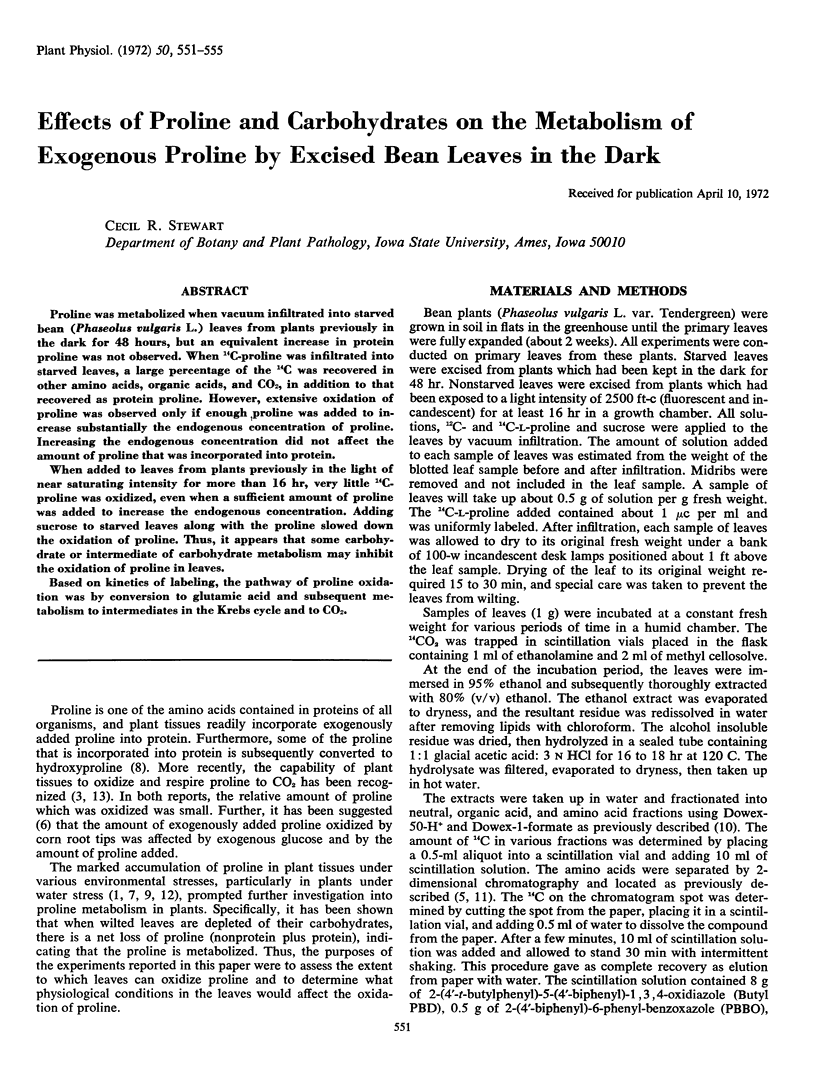
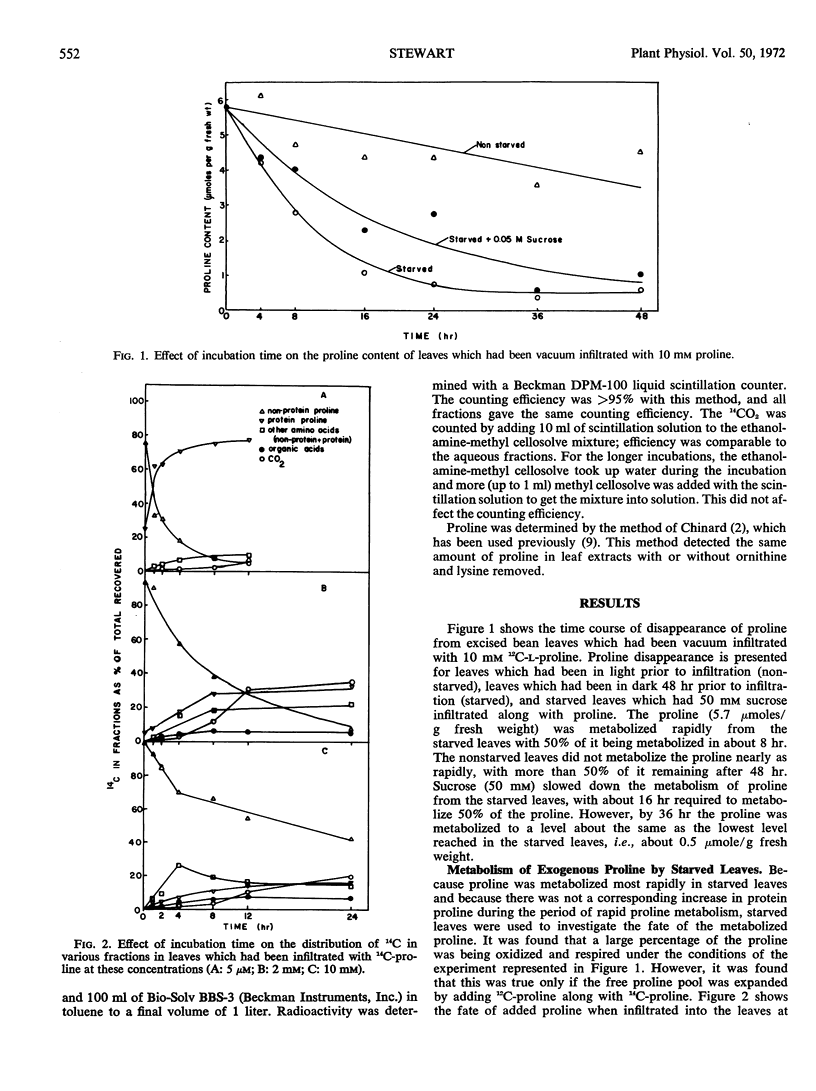
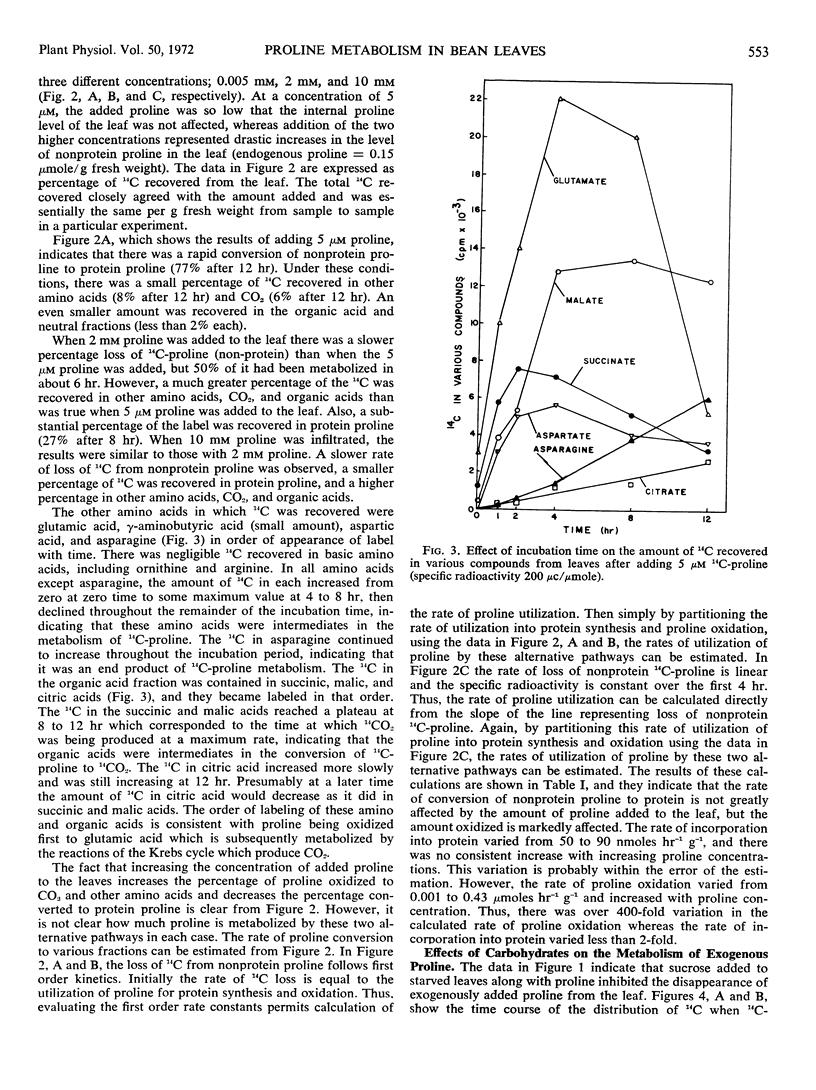
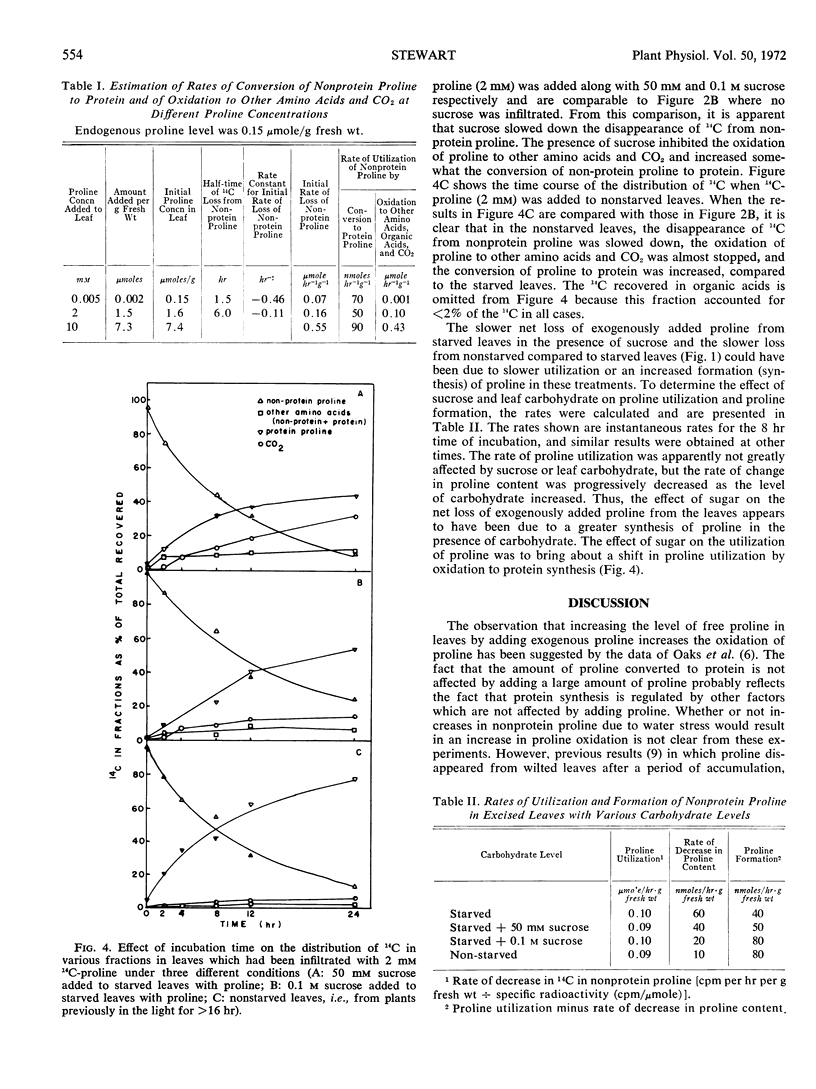
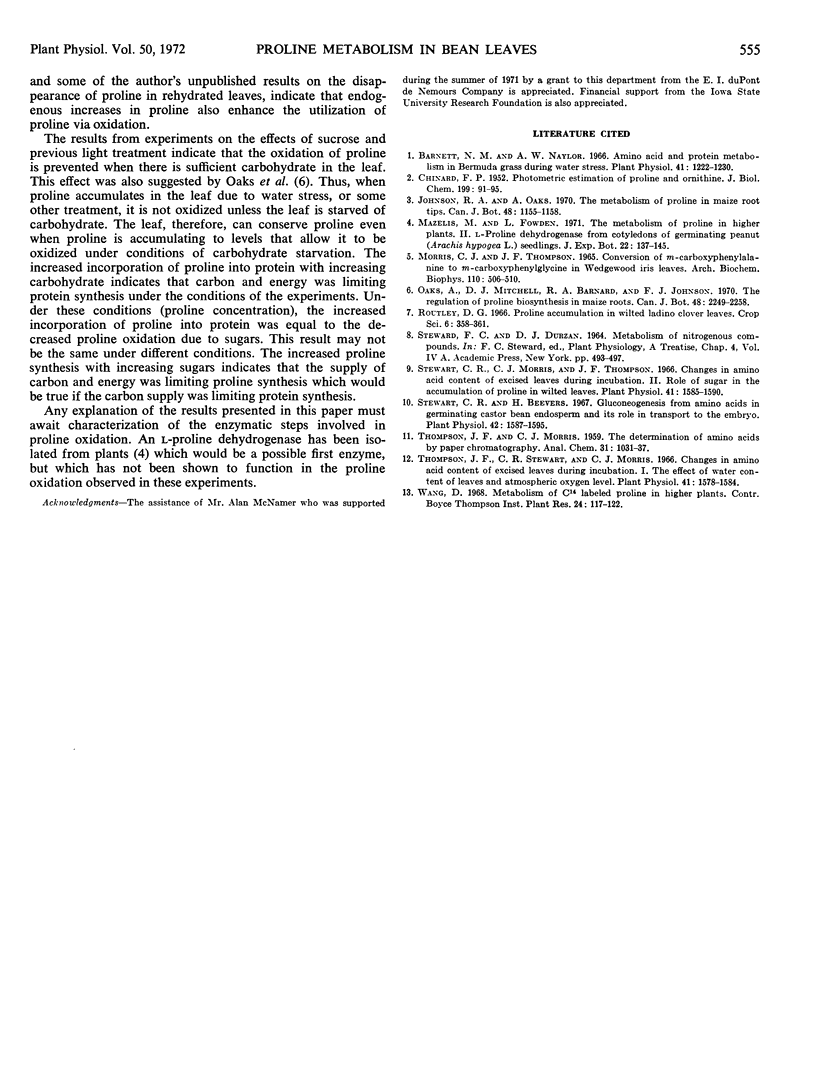
Selected References
These references are in PubMed. This may not be the complete list of references from this article.
- Barnett N. M., Naylor A. W. Amino Acid and protein metabolism in bermuda grass during water stress. Plant Physiol. 1966 Sep;41(7):1222–1230. doi: 10.1104/pp.41.7.1222. [DOI] [PMC free article] [PubMed] [Google Scholar]
- CHINARD F. P. Photometric estimation of proline and ornithine. J Biol Chem. 1952 Nov;199(1):91–95. [PubMed] [Google Scholar]
- Morris C. J., Thompson J. F. Conversion of m-carboxyphenylalanine to m-carboxyphenylglycine in Wedgewood iris leaves. Arch Biochem Biophys. 1965 Jun;110(3):506–510. doi: 10.1016/0003-9861(65)90443-1. [DOI] [PubMed] [Google Scholar]
- Stewart C. R., Beevers H. Gluconeogenesis from amino acids in germinating castor bean endosperm and its role in transport to the embryo. Plant Physiol. 1967 Nov;42(11):1587–1595. doi: 10.1104/pp.42.11.1587. [DOI] [PMC free article] [PubMed] [Google Scholar]
- Stewart C. R., Morris C. J., Thompson J. F. Changes in Amino Acid Content of Excised Leaves During Incubation. III. Role of Sugar in the Accumulation of Proline in Wilted Leaves. Plant Physiol. 1966 Dec;41(10):1585–1590. doi: 10.1104/pp.41.10.1585. [DOI] [PMC free article] [PubMed] [Google Scholar]
- Thompson J. F., Stewart C. R., Morris C. J. Changes in amino Acid content of excised leaves during incubation I. The effect of water content of leaves and atmospheric oxygen level. Plant Physiol. 1966 Dec;41(10):1578–1584. doi: 10.1104/pp.41.10.1578. [DOI] [PMC free article] [PubMed] [Google Scholar]


